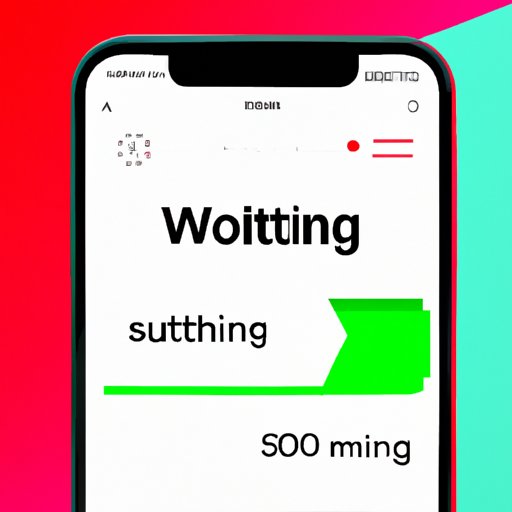
Introduction
Spending too much time staring at screens can have detrimental effects on our physical and mental health. Android devices are among the most widely used devices, making it important to know how to effectively manage screen time on these devices. In this article, we will discuss in detail how to check screen time on Android devices, useful features that help reduce screen time, and practical tips to help you reduce screen time.
Managing Screen Time on Android: A Beginner’s Guide
Monitoring and limiting screen time on your Android device can help you avoid negative effects associated with overuse of screens. Checking screen time on Android is straightforward and only takes a few steps.
To check screen time on Android, navigate to your device’s Settings, select ‘Digital Wellbeing and Parental Controls’, and then click ‘See your activity’. This option shows data on your daily usage, daily app usage, and notifications received. You can also set app timers and notifications that remind you when you’re about to exceed your screen time limit.
The Best Apps to Monitor Your Screen Time on Android
Screen time monitoring apps are designed to help you track app usage, limit screen time, and maintain privacy and security on your device. We’ve compiled a list of some of the best screen time monitoring apps for Android.
1. Digital Wellbeing: Digital Wellbeing is a native Android app that allows you to track screen time, app usage, and set limits for specific apps. You can also configure a wind-down feature to reduce blue light exposure before bedtime.
2. AppDetox: AppDetox lets you set app usage limits by notifying you when you’ve reached a predetermined time limit. You can also set time limits for specific times of day or on weekends.
3. RealizD: RealizD analyzes your app usage data and generates personalized recommendations to help you manage your screen time. It also provides access to detailed analytics that allow you to monitor your screen time usage over a period.
Hidden Android Features to Help You Cut Down Your Screen Time
There are many built-in features on Android that can help you reduce your screen time. Here are some of the lesser-known features:
1. Grayscale Mode: Enabling grayscale mode can help reduce the excitement and temptation that comes with colorful, vibrant images. To activate grayscale mode, navigate to Settings, click Accessibility, then select ‘Color correction’, then toggle on grayscale mode.
2. Wind-Down Feature: This feature helps you reduces exposure to blue light by turning your screen into greyscale, and enabling Do Not Disturb mode, which silences all notifications. To activate the wind-down feature, navigate to Settings, select Digital Wellbeing and Parental Controls, then tap on Bedtime mode and turn on Wind down.
Tips and Tricks to Reduce Screen Time on Android
Below are some practical suggestions for reducing screen time on Android:
1. Create schedules and stick to them by setting aside specific times for work, relaxation, and other activities
2. Take breaks frequently by stepping away from your device and engaging in physical activity or other non-screen-related activities, such as reading or walking.
3. Use notification management tools to tune down irrelevant notifications reducing the urge to check your device unnecessarily.
The Negative Effects of Too Much Screen Time and How to Avoid Them on Android
Excessive screen time can affect both your physical and mental health. Prolonged exposure to screens may cause eye strain, headaches, and neck or back pain. It can also lead to poor sleep quality, anxiety, and depression. Fortunately, there are many ways to avoid or mitigate these effects. Here are some tips:
1. Take frequent screen breaks and look 20 feet away to break the focus on your device and reduce eye strain.
2. Physical activity that can help mitigate the effects of too much screen time. Take a walk, jog or run.
3. Use screen time management apps to monitor and limit your screen time usage
How to Limit Your Kids’ Screen Time on Android Devices
Limiting your child’s screen time on Android devices is crucial for maintenance of their physical and mental health. Here are some useful tips to keep their screen time in check:
1. Setting limits by utilizing the Digital Wellbeing setting, to entirely avoid unhealthy screen time usage,
2. Use parent mode, which allows control of your kids’ app usage and time spent on apps
3. Encourage outdoor activities.
Conclusion
Monitoring your screen time is the first step to achieving a healthy balance between screen time and other activities. Android devices provide various features to monitor and reduce screen time usage. Use of screen time monitoring apps can help you keep track of how much time you spend on your device and limit your usage. Finally, it’s important to take breaks, engage in physical activity, and encourage children to divert into activities other than screen times.




